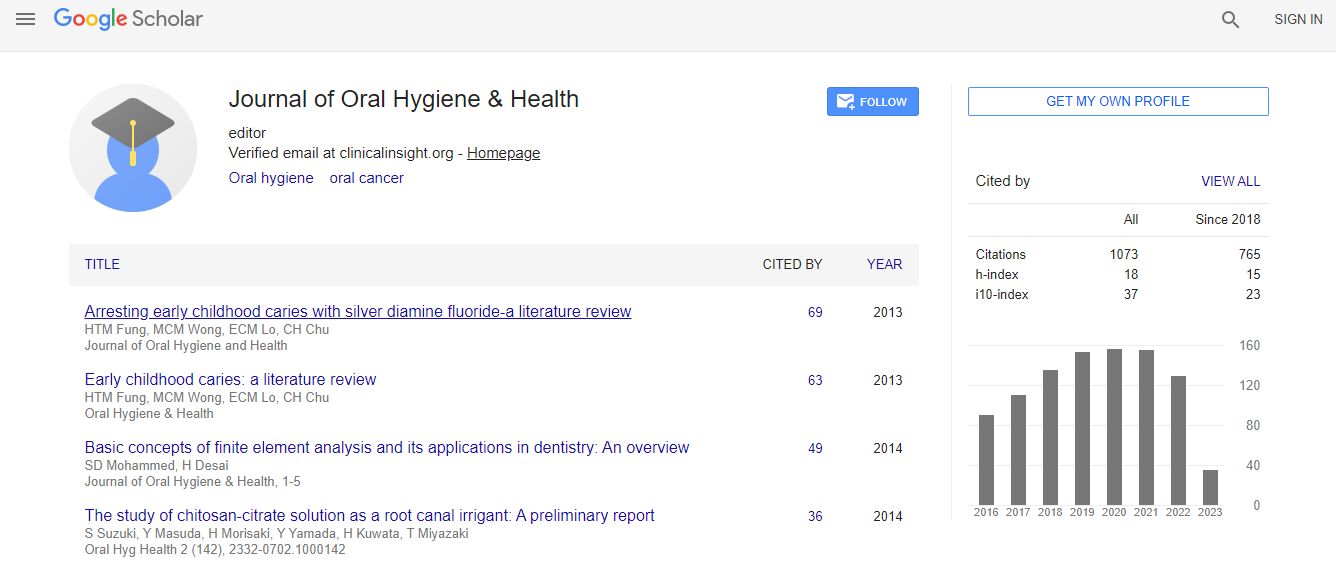Research Article
Determinants of Utilization of Oral Health Services by Postnatal Mothers in Winterveldt, Gauteng Province, South Africa
P Gwengu*Sefako Makgatho Health Sciences University, Pretoria, Gauteng, South Africa
- *Corresponding Author:
- P Gwengu
Sefako Makgatho Health Sciences University
Pretoria, Gauteng, South Africa
Tel: 27125214827
Fax: 27866206455
E-mail: pumela26@gmail.com
Received Date: March 31, 2017; Accepted Date: June 14, 2017; Published Date: June 21, 2017
Citation: Gwengu P (2017) Determinants of Utilization of Oral Health Services by Postnatal Mothers in Winterveldt, Gauteng Province, South Africa. J Oral Hyg Health 5: 222. doi: 10.4172/2332-0702.1000222
Copyright: © 2017 Gwengu P. This is an open-access article distributed under the terms of the Creative Commons Attribution License, which permits unrestricted use, distribution, and reproduction in any medium, provided the original author and source are credited.
Abstract
A case control study was conducted to determine factors (enhancers and barriers) relating to the utilization of oral health services by postnatal mothers in the Sisters of Mercy Clinic in Winterveldt. Control of oral diseases of postnatal mothers depends on the availability, readiness and accessibility of oral health systems, but any reduction of risk to diseases is only possible if services are oriented towards Primary Health Care (PHC).
107 cases (postnatal mothers who were present users of oral health services in the dental unit at the time of their interviews) and 107 controls (postnatal mothers who were present non-users of oral health services in the postnatal and immunization unit at the time of their interviews) were included in the study. Age matched non-users of oral health services who were fulfilling the same inclusion criteria for users of oral health services were selected for comparison. A closed ended questionnaire was specifically designed for the study in English, and together with the information sheet and consent forms translated into the vernacular. Questionnaires were administered by a trained researcher from December 2010 - February 2012. The questionnaire was divided into four categories, namely, sociodemographic factors, socio-economic factors, access factors and utilization factors. Bivariate (Chi-square test) and multivariate (logistic regression) analyses were carried out to find associations between the factors and use of oral health services.
Results: The study revealed that the majority of postnatal mothers were less than 29 years old (61% were cases and 47% were controls); were biological mothers (93% cases and 78% controls); were unemployed (93% cases and 84% controls); were on social grants (68% cases and 66% controls) and had a secondary school education (80% cases and 79% controls). In the control group, 64% reported that they had dental problems compared to 36% in the case group, but only 51% of the controls reported that they had previous visits at Sisters of Mercy dental clinic compared to 64% of the cases. Bivariate analysis revealed significant differences in 14 variables. Logistic regression revealed the strongest predictors for present use of oral health services to be: the number of household children and travelling time. Participants in the dental unit had to travel for 30 minutes who were found to be more likely to utilize oral health services (OR= 1.38; CI=1.01-1.90; P ≤ 0.05) compared to those from the postnatal unit who had to travel longer (more than 1 hour). Participants with fewer children in the postnatal unit were found to be less likely to utilize oral health services (OR= 0.53; CI=0.305-0.924; P ≤ 0.05) compared to those with more children (>5) in the dental unit.
Conclusions: Despite having fewer children, most postnatal mothers in the postnatal unit did not make previous use of oral health services. There is a need to encourage them to utilise oral health services and to ensure that the Sisters of Mercy dental clinic is accessible to them. Mothers who had to walk for more than an hour to reach oral health services had accessibility constraints which can affect them negatively especially in harsh weathers (rainy, cold or hot days in South Africa).

 Spanish
Spanish  Chinese
Chinese  Russian
Russian  German
German  French
French  Japanese
Japanese  Portuguese
Portuguese  Hindi
Hindi 
